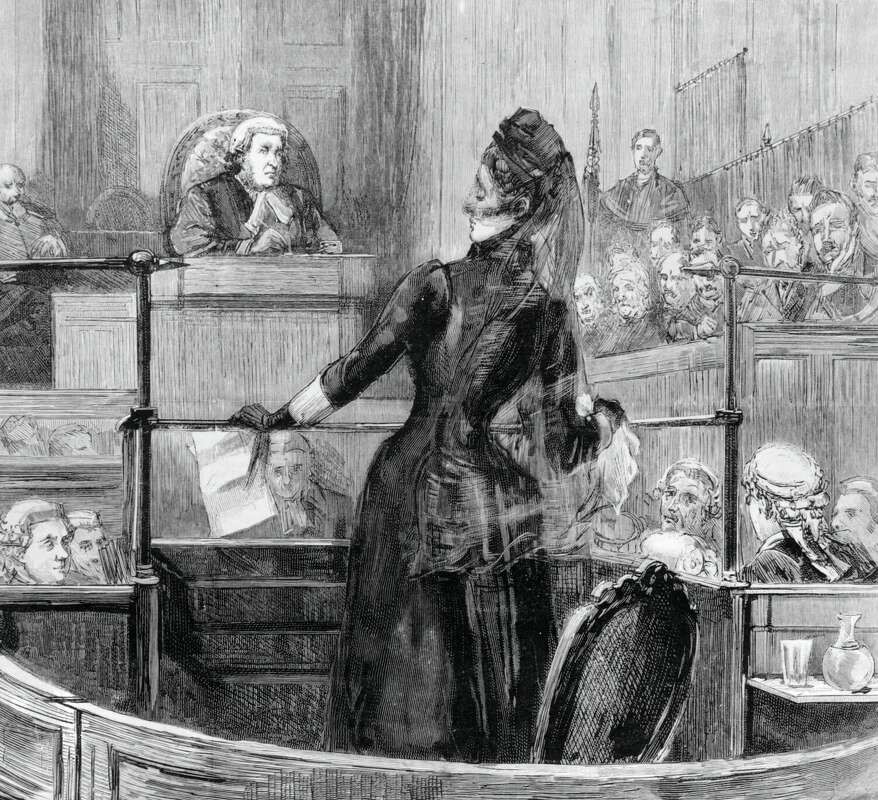The Florence Maybrick Trial

Florence Maybrick in court: Photograph: Hulton Archive/Getty Images
In 1889 Florence Maybrick was accused of murdering her husband, James Maybrick. However, to this day people still believe she is innocent – some people even believe that the man she killed was Jack the Ripper!
Earlier that year, James had fallen ill and eventually died. His family then became very suspicious of his wife and so the police began to investigate.
They found a large amount of arsenic in James’ system; however, many would argue this would have been down to his drug addiction. This would also explain the large amount of the drug found in their home.
Nevertheless, Florence was charged with the murder of her husband, and she was to be tried at St George’s Hall.
Florence admitted to the court that she was having an affair with a younger man. At the time this claim would have been fatal to her, despite James Maybrick also having a mistress.
It was claimed in court that Florence had soaked 12-dozen fly papers to obtain the arsenic from them.
On 7 August 1889 the Liverpool jury found her guilty and she was sentenced to death.
However, her sentence was later reduced to a life sentence, she served 15 years before being release.
Upon her release she returned to her native America and only came back to Liverpool on one occasion and that was to watch the Grand National.
The biggest twist in this case came nearly a decade later when a diary was uncovered that seemed to belong to James Maybrick. The diary entries had many similarities to that of the life of James.
The owner of the diary had claimed to be the infamous Jack the Ripper, leading many people to argue Florence had done a justice to society by murdering her husband. It was claimed Florence might have known about her husband’s role in the crimes.
The legitimacy of the diary has been questioned, with some experts claiming it is a fake. If real, it is also not certain if the diary would have belonged to James Maybrick.
It remains an interesting tale in the life of St George’s Hall.